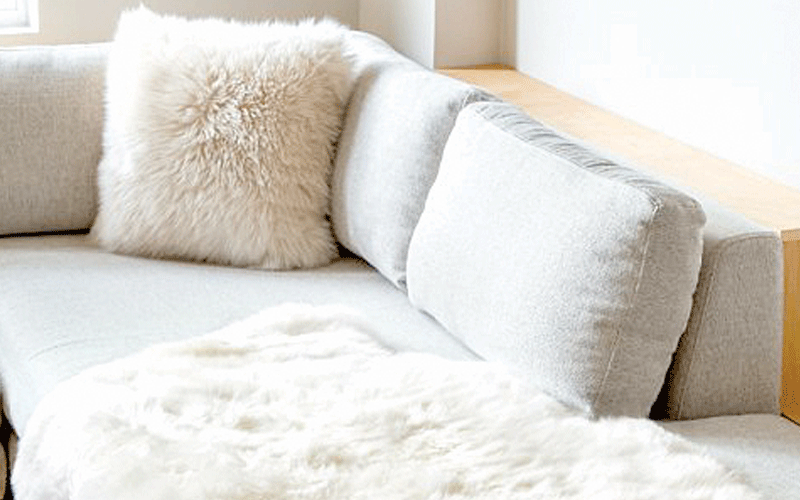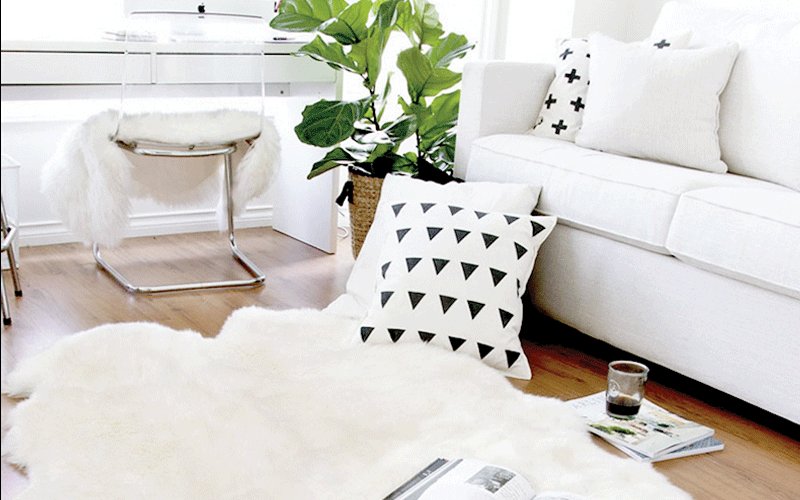Instantly cozy up with sheepskin rugs

Joseph Maina
Sheepskin rugs come in all different colours, texture and patterns, making them more versatile than many of us realise.
It doesn’t matter if your style is contemporary or traditional style; sheepskin rug can complement it.
It checks all the boxes for a comfy, practical yet elegant resting place for your feet on a cold evening.
Yet it is one of the most understated item of home décor in most Kenyan homes.
They are a ubiquitous sight along various highways and most rural towns, but all they do is feebly sway in the wind as they await buyers, who are always rare to come by.
“Sheepskin rugs are beautiful and versatile,” says interior designer Joy Gathuita. “It’s a pity they’ve not found widespread use.
These rugs can make for a lovely sight in the living room, bedroom and hotel room, among other spaces.
It also quite affordable compared to the contemporary imported rugs,” she says.
Besides its better known function as a snug mat for the toes on a cement or tiled floor, the sheepskin rug can be used in the car, where it functions as a fluffy and chic seat cover.
“In the house, the rug can also be spread on the sofa; they make beautiful wall hangings for the living room and also bears a cultural feel, perfect for hotel decorations.
You can hang it in the bedroom, or lay it on the floor, just next to the bed. Some stools can also be made using this rug and they look really nice.

The options are numerous,” the Ruiru-based interior designer told Boma.
How they are made
In addition, Joy says, the rugs come in neutral colors, making them an easy fit in various environments.
At the Flyover viewpoint next to Kobil along the Nairobi-Naivasha highway, John Njenga, a sheepskin rugs trader patiently sits awaiting customers.
In his hand is a table fork, his all important tool in the final steps of making the rugs.
When we ask him what goes into the intricate curing process that transforms the raw sheepskin into a prized interior décor masterpiece, his face lights up, probably to the realisation that someone is interested in learning about something he is so passionate about.
He tells us the sheepskin emerges from the butchery as a mass of flesh and fur, wet, fetid and hardly useful in this state except as a lure of flies and other parasites.
“We start by drying the skin by rubbing salt into the flesh and laying it in the sun.
Once sufficiently dried, the skin is then taken for cleaning, preferably in a river or other place with plenty of moving water,” says Mzee Njenga.

Here, it is cleaned once again, using a metal brush with bristles made of nails. Another wash follows, this time using bar soap, after which the skin is sundried again.
Completely dry, the skin is subjected to thorough scrapping by means of a special adze-like tool that rids it of any remnants of flesh.
Another scrapping follows, this time with a cleaning stone.
By products
Njenga says the hardest part comes when combing the wool, “The fur is combed by means of a table fork bringing out loose fur, which we sell off as a byproduct to manufacturers of shoe polishing products.
This fine wool is what you see at the tip of a suede applicator. We sell it for Sh400 a kilogramme.”
An additional product of the sheepskin is a warm hat that bears a striking resemblance to the Russian fur hat.
The hat is worn in various cultural events in many parts of central Kenya.
At the end of this rigorous curing process, not a whiff of flesh can be smelt in the rug, and it loses that distinct sheep smell in the wool, which Njenga says is largely a product of sweat from the animals or picked from their sleeping quarters.
“From this point, one can use it as it is, or apply a suitable perfume to suit one’s taste. But the odour is gone, that’s for sure,” he says.
The advantage of the sheepskin rugs he says, is their durability. It also requires little maintenance.
Importantly, one must avoid contact with water as it can elicit some odour if not dried properly. They are sold at a minimum cost of Sh3000.
Njenga’s only regret is that the local market has not quite adapted this tasteful, homegrown gem of interior décor.












